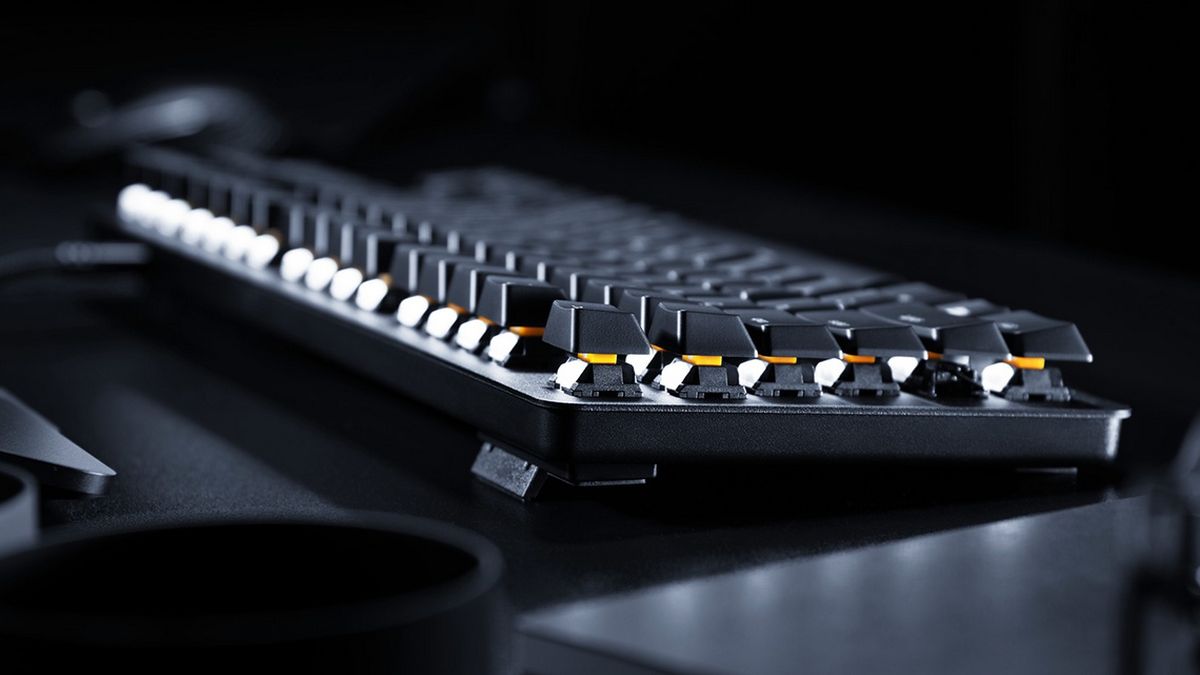- Mechanical switches are divided into linear, tactile, and clicky, each with unique characteristics.
- Switch colors, such as red, blue, and brown, represent differences in feel and response.
- There are other types of switches such as optical and membrane switches with different advantages and disadvantages.

If you've ever wondered why some keyboards feel softer to the touch while others offer more resistance, the answer lies in the mechanical switchesThese small electromechanical components located beneath each key have a significant impact on the typing and gaming experience. Depending on the switch type, the response to keystrokes can be faster, quieter, tactile, or louder.
In this article, we will explore in detail the different types of mechanical keyboard switches, their features, and key differences, so you can choose the one that best suits your needs, whether for gaming, work, or simply enjoying a more comfortable typing experience. If you're interested in learning more about keyboards and their features, you can visit our page about Braille keyboards.
What is a switch on a mechanical keyboard?

Un Switch It's the mechanism located beneath each key on a mechanical keyboard that registers the keystroke when we press it. In traditional membrane keyboards, this process is done through a rubber sheet, which results in a less precise and long-lasting experience.
Mechanical switches, on the other hand, are more advanced and feature individual mechanisms for each key, improving accuracy, speed, and typing feel. Depending on their design, switches can be classified as linear, tactile or clicky, according to the response and sound they emit when pressed.
Main features of mechanical switches
To choose the perfect switch, you need to know several features that influence the user experience:
- Actuation force: It is the pressure that must be applied to the key for the keystroke to register. It is measured in Newtons (N) or grams (g).
- Activation distance: This is the depth at which the key must be pressed for the switch to activate. It is measured in millimeters.
- Total distance: The full distance a key can travel from its resting state to the bottom.
- Sound: Some switches are silent, while others emit a distinctive click that can be annoying or satisfying, depending on the user.
Types of mechanical switches
There are three main categories of mechanical switches: linear, tactile and clickyEach type is designed for a specific user profile and offers a distinct experience.
Linear switches
The switches linear They are known for their smooth, even travel. They have no additional resistance and generate no noise when pressed, making them ideal for those seeking speed and precision without distractions.
Examples of linear switches:
- Cherry MX Red
- Gateron Red
- Razer Yellow
They are an excellent option for Gamers, as they allow for multiple clicks without interruption. If you'd like to learn more about mouse-only PC games, you can visit our page on mouse-only PC games.
Tactile switches
These switches have a tactile bump Perceptible halfway through the key travel. This design allows users to feel when the key has been activated, helping them avoid accidental keystrokes.
Examples of touch switches:
- Cherry MX Brown
- razer orange
- Logitech Romer-G Tactile
They are a versatile option that works well for both gaming and writing.
Clicky switches
The switches clicky They combine a tactile bump with a distinctive click sound. This type of switch is very popular among typists, but can be annoying in shared environments.
Examples of clicky switches:
- Cherry MX Blue
- RazerGreen
- Gateron Blue
They are ideal for those who enjoy clear tactile and auditory feedback.
Switch colors and their differences

Mechanical switches are identified by colors, each with different characteristics:
- Red: Linear and smooth, ideal for gaming.
- Blue: Clicky, loud and perfect for typing.
- Brown Tactile, balanced between typing and gaming.
- Black: Linear but with greater resistance, useful to avoid accidental keystrokes.
Other types of switches
In addition to traditional mechanical switches, there are other types of switches:
- Membrane: Quieter and more economical, but less precise.
- Opticians: They use light technology for greater speed and durability.
- Hall Effect: They detect changes in the magnetic field to offer a more customizable activation experience.
Choosing the right switch will depend on your wearing style. If you're gamer, linear switches may be the best option. If you type a lot and want a tactile sensation Without making too much noise, brown switches may be the ideal choice. Meanwhile, if you enjoy the classic sound and have a space where noise isn't a problem, blue switches can offer a unique typing experience.
Passionate writer about the world of bytes and technology in general. I love sharing my knowledge through writing, and that's what I'll do on this blog, show you all the most interesting things about gadgets, software, hardware, tech trends, and more. My goal is to help you navigate the digital world in a simple and entertaining way.

